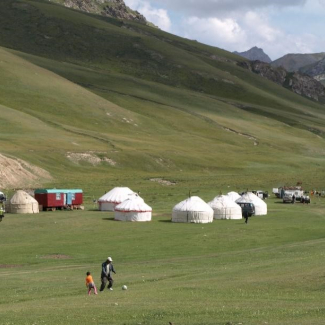
West Africa: human-induced air pollution is higher than expected
Emissions of volatile organic pollutants in West Africa are 100 to 150 times higher than current estimates for the region, according to a study by researchers from the CNRS and Université Clermont-Auvergne1
, in collaboration with the Institut Mines Télécom Lille-Douai and Université Felix Houphouët-Boigny (Abidjan, Côte d’Ivoire). The results2
, obtained from field measurements carried out as part of the European DACCIWA3
programme, highlight the urgent need to set up more realistic and appropriate regional emission inventories in order to better predict their impacts on health, air quality and climate. The study, which took place in Côte d'Ivoire and focused on emissions from road traffic, waste combustion and domestic fires, shows that they far exceed those of all the European countries combined. The paper will be published on 24 September 2019 in Atmospheric Chemistry and Physics.

- 1At the Laboratoire de Météorologie Physique (CNRS/Université Clermont Auvergne) and at the Laboratoire d’Aérologie (CNRS/Université Toulouse 3 Paul Sabatier).
- 2The data from the study are available on the AERIS database: http://baobab.sedoo.fr/DACCIWA
- 3Dynamics-Aerosol-Chemistry-Cloud Interactions in West Africa (https://www.dacciwa.eu/)
Anthropogenic VOC in Abidjan, southern West Africa: from source quantification to atmospheric impacts. Pamela Dominutti, Sekou Keita, Julien Bahino, Aurélie Colomb, Cathy Liousse, Veronique Yoboué, Corinne Galy-Lacaux, Eleanor Morris, Laëtitia Bouvier, Stéphane Sauvage and Agnès Borbon. Atmospheric Chemistry and Physics. Le 24 septembre 2019. DOI : https://doi.org/10.5194/acp-19-11721-2019


